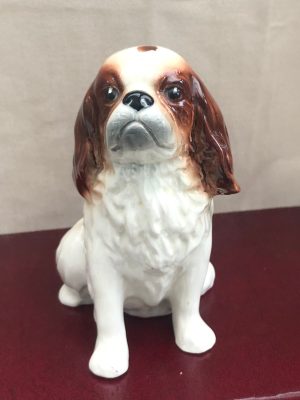
Etymologically speaking, a lozenge is a four-sided, diamond-like shape. For those who remember high school geometry, it’s a rhombus that isn’t a square.
Only two AKC breeds mention the word, “lozenge,” in their standards, but they have very different meanings from each other.
The Bloodhound is an eruption of marvelously loose skin and deep furrows. When a hound lowers his head to ground, an occupational necessity, wrinkles form over the eyes as skin slides and serves to protects the dog’s eyes from vegetation; deeply sunk eyes are rendered diamond shaped from lower lids sagging. Accordingly, the standard reads: “The eyes are deeply sunk in the orbits, the lids assuming a lozenge or diamond shape, in consequence of the lower lids being dragged down and everted by the heavy flews.”
In the Cavalier King Charles Spaniel, the word is confined to color called, “Blenheim” (named after the residence of the Dukes of Marlborough, and where Winston Churchill would later be born). The standard reads: The ears must be chestnut and the color evenly spaced on the head and surrounding both eyes, with a white blaze between the eyes and ears, in the center of which may be the lozenge or “Blenheim spot.” The lozenge mark is unique and, depending upon whom you ask, highly desirable. Sometimes, the spot is referred to as the “Queen’s Thumbprint,” because of a legend.
As the story of the legend goes, when the Duke of Marlborough fought in the battle of Glenheim in 1704, his worried wife clutched her pregnant Blenheim Spaniel and absent-mindedly, kept pressing her thumb on the dog’s head as she pet her dog. When news of the great battle victory against Louis XIV at the battle of Bleheim arrived, five puppies were soon born, each bearing red thumbprints on their heads. The mark became known as the Blenheimm or lozenge spot.
Two different breeds, and same word in two very different spots.
Image: Vintage Blenheim Cavalier King Charles Spaniel figurine by Sylvac offered by Jon, owner of Zwipards
